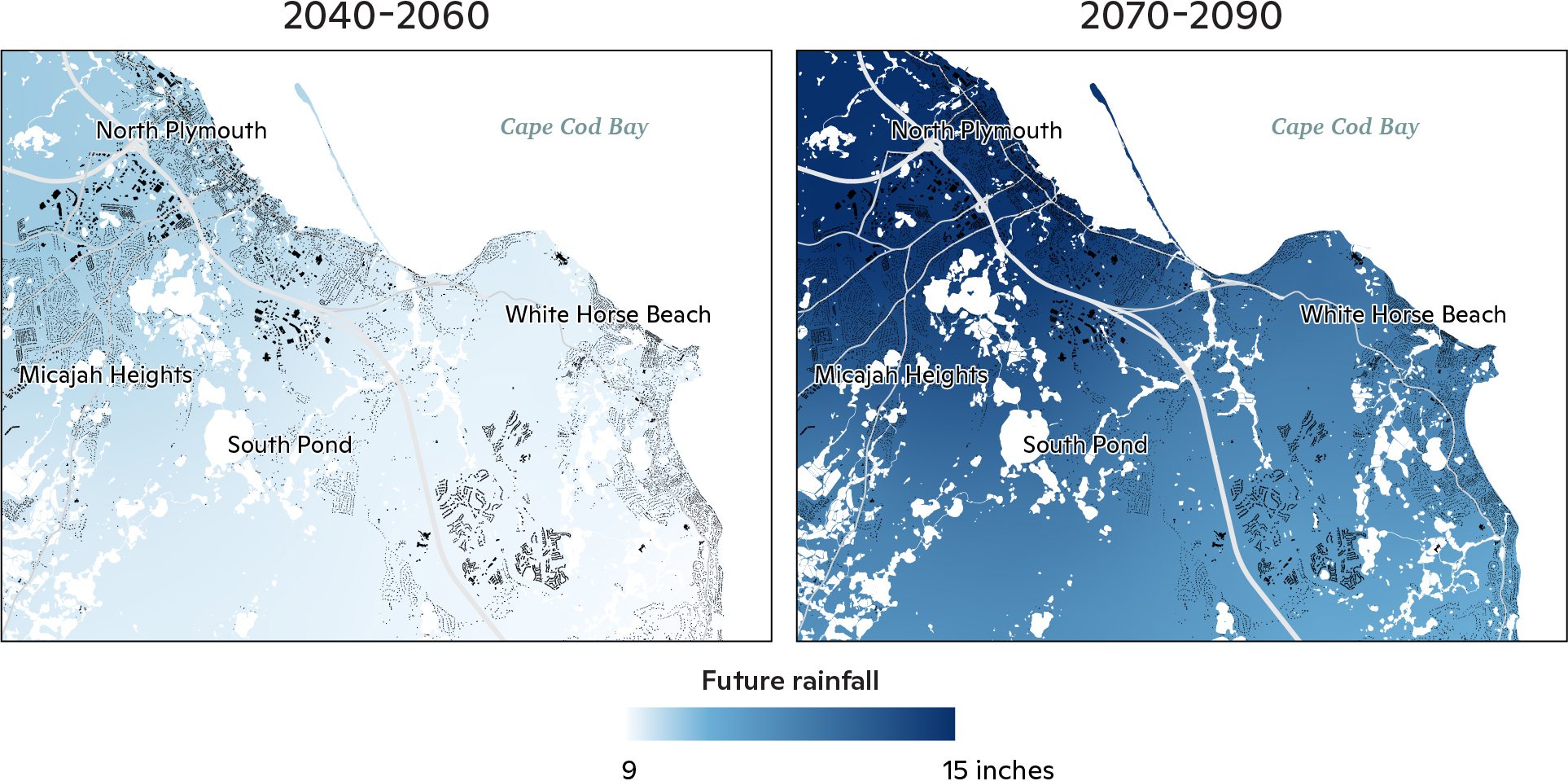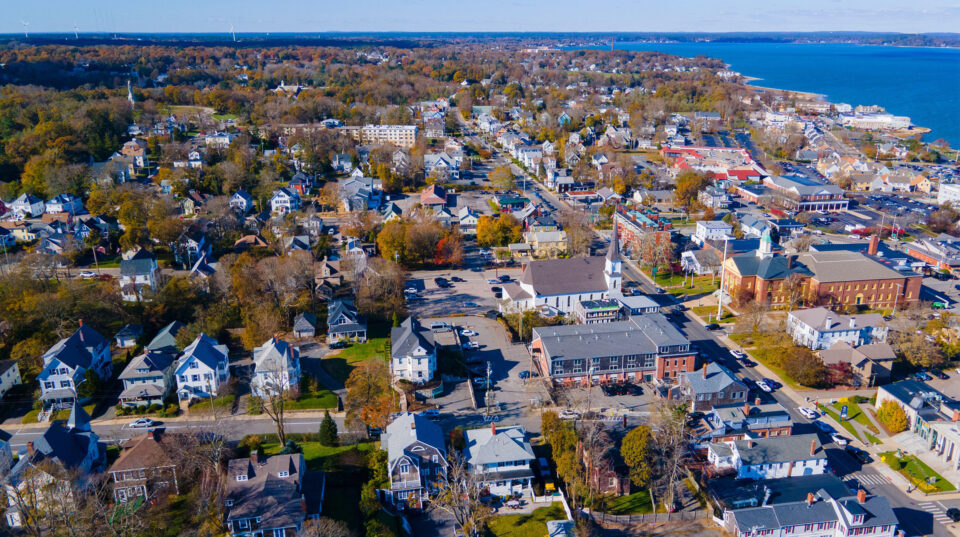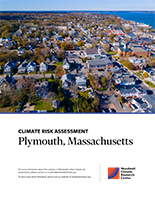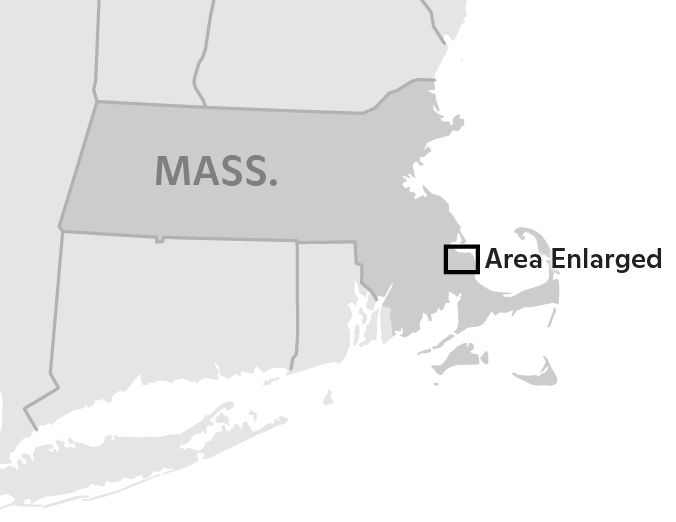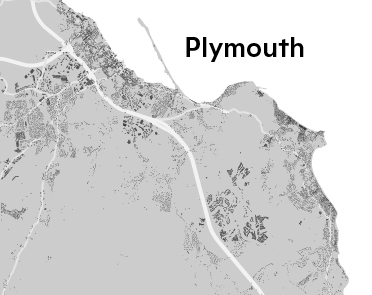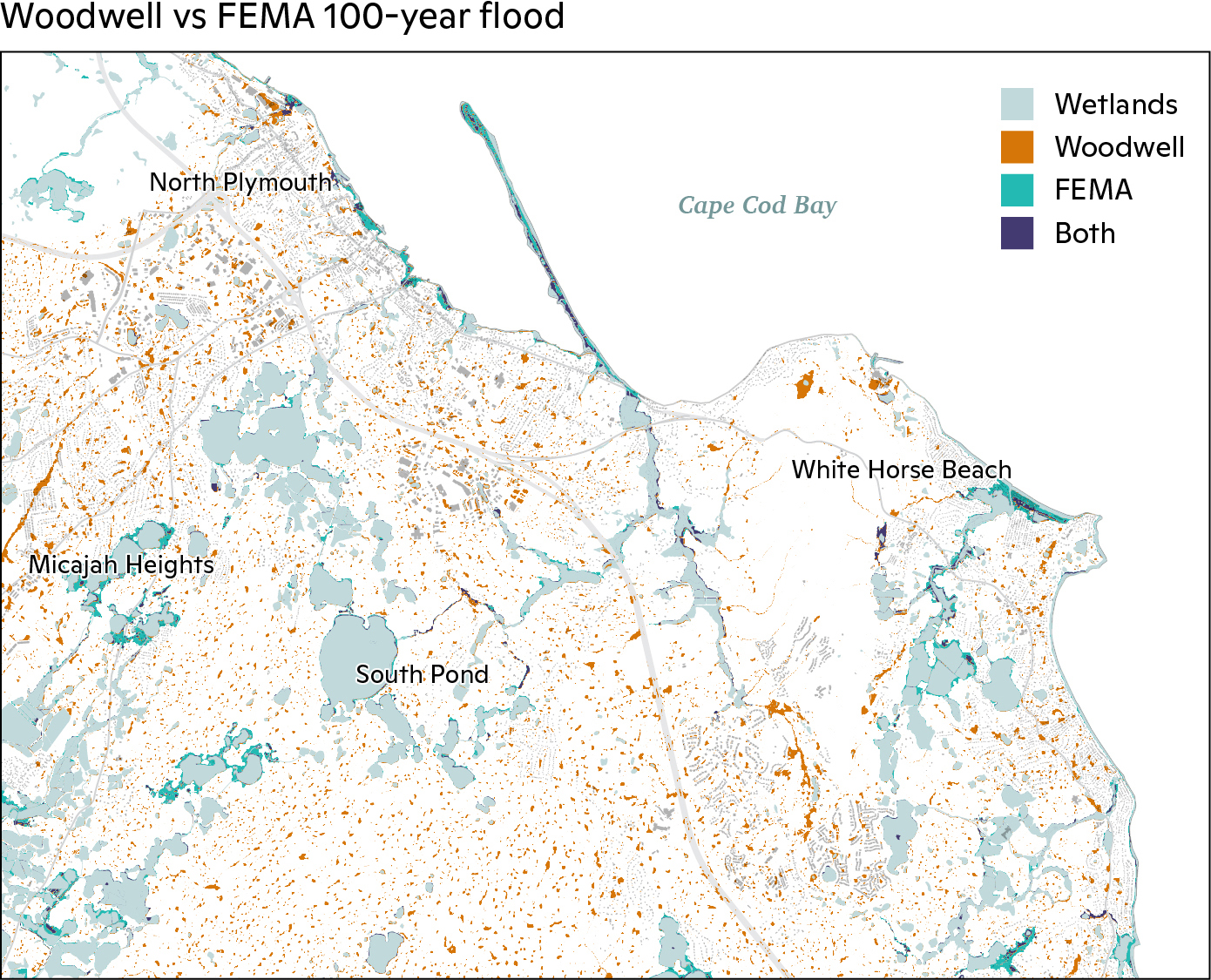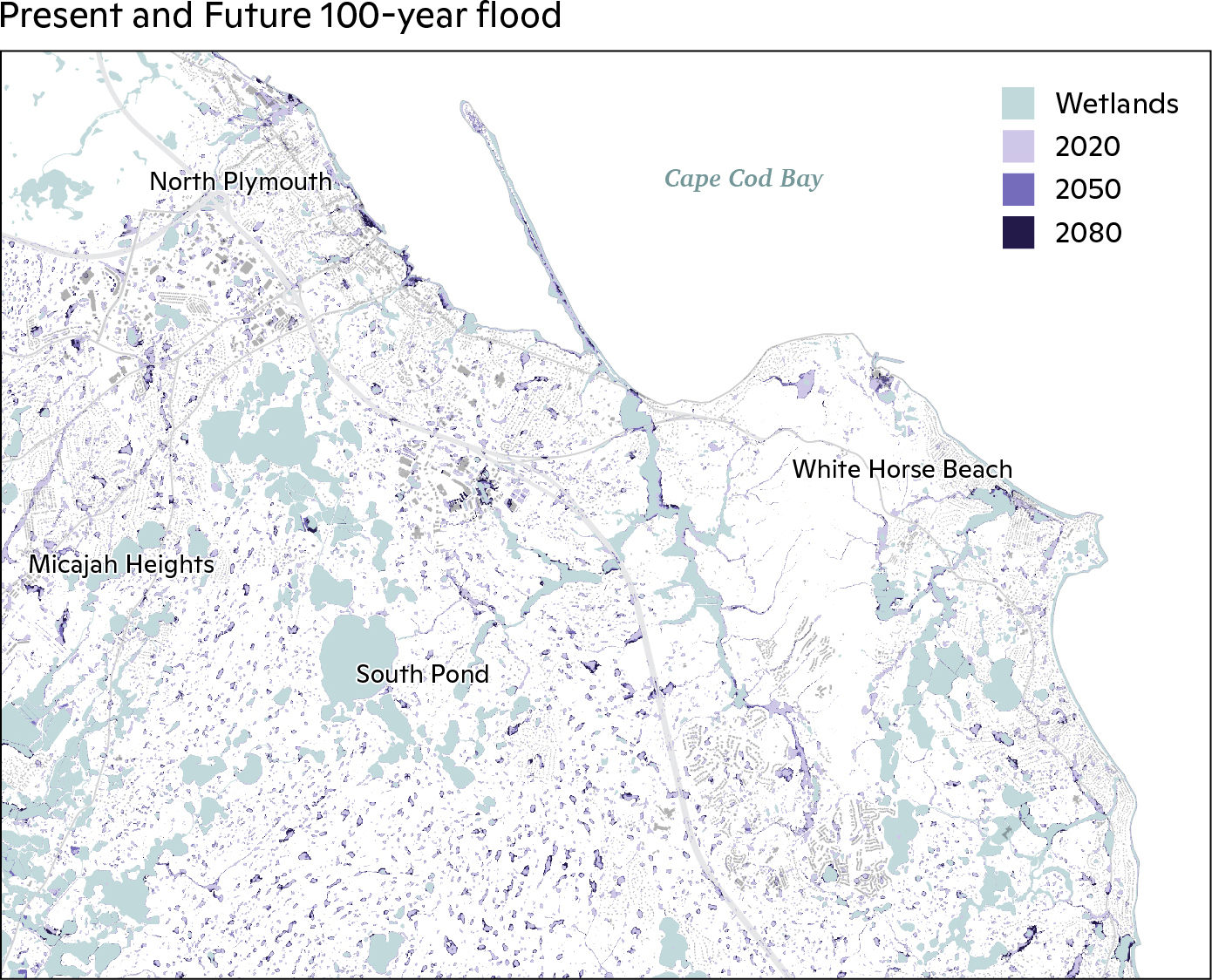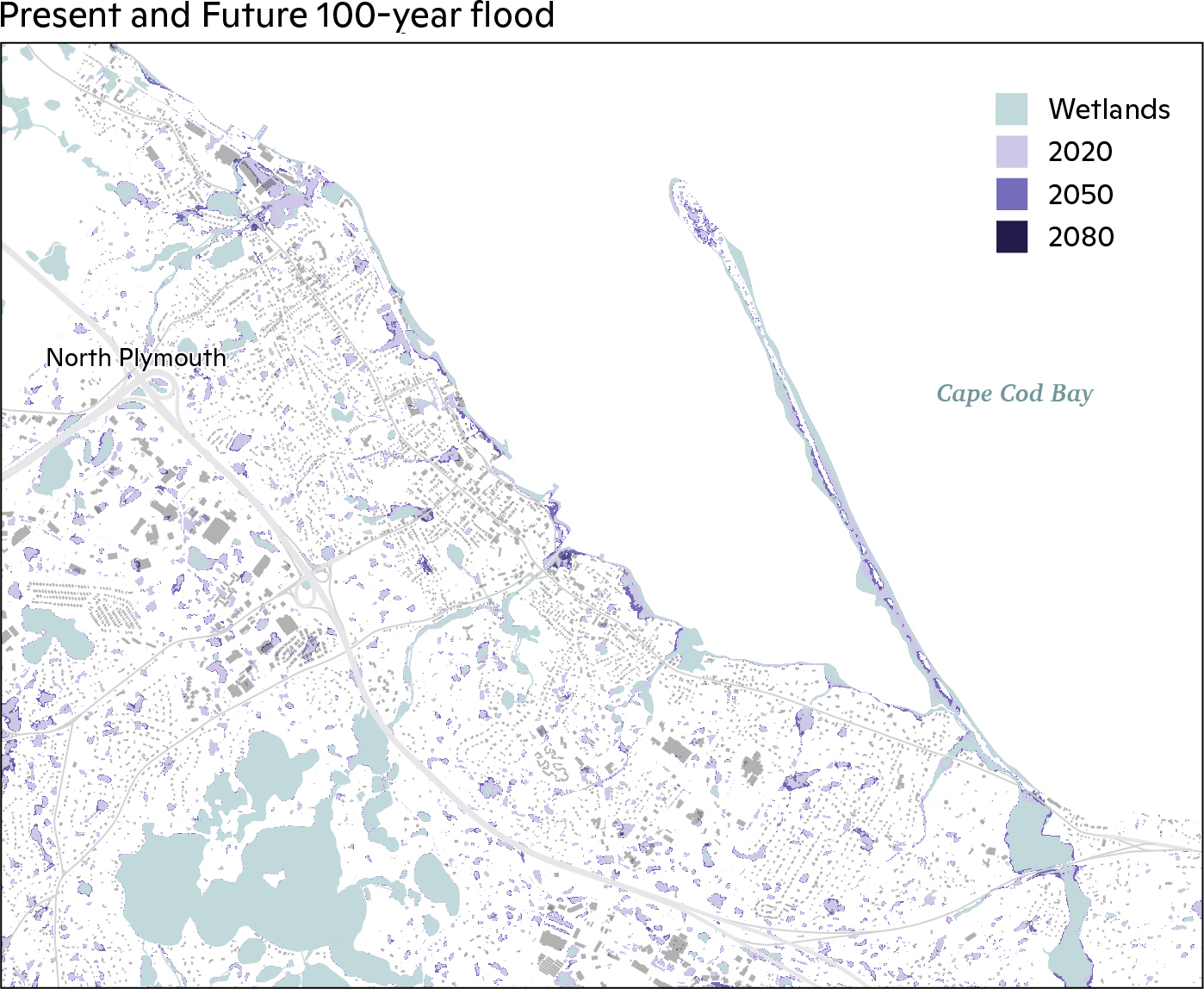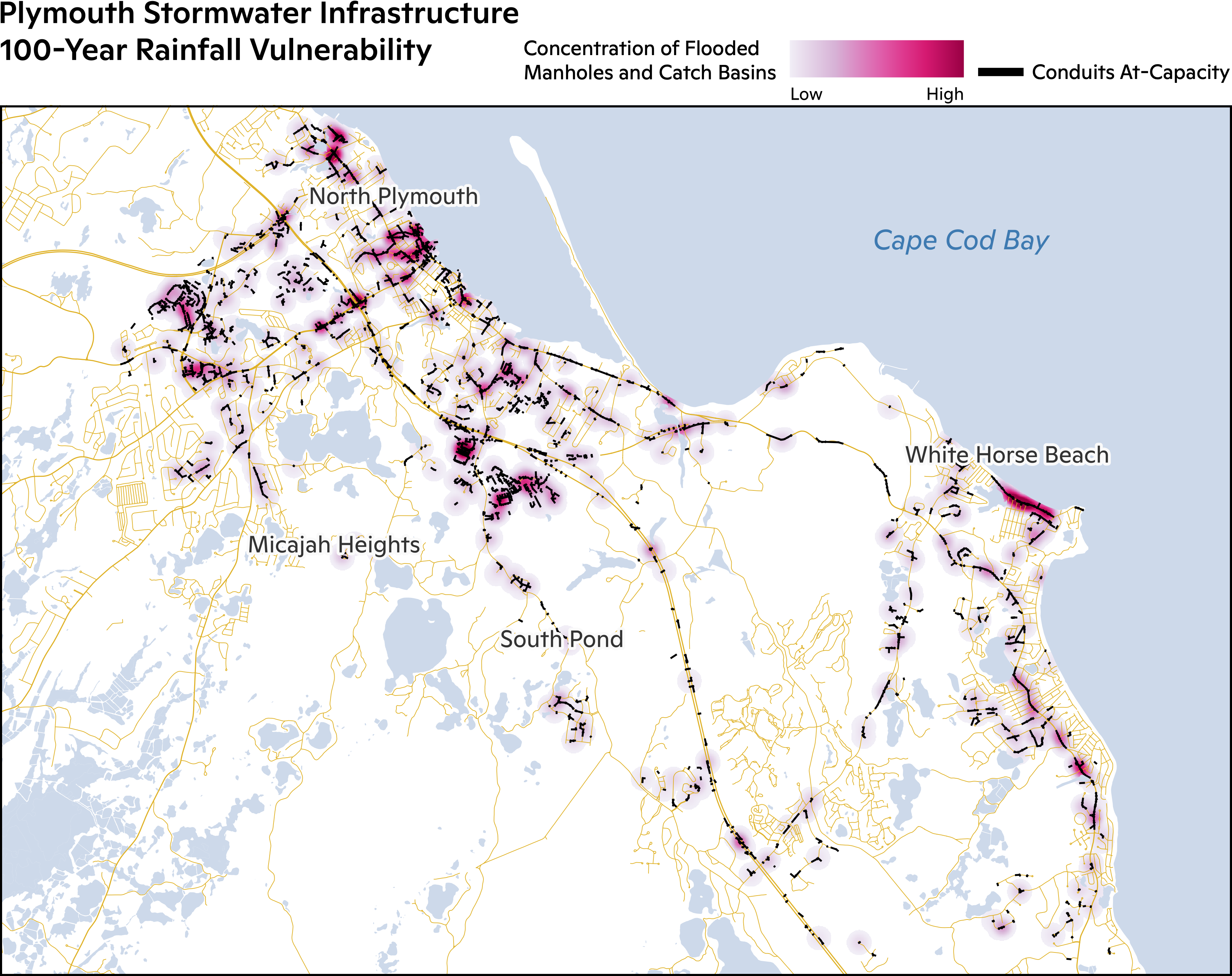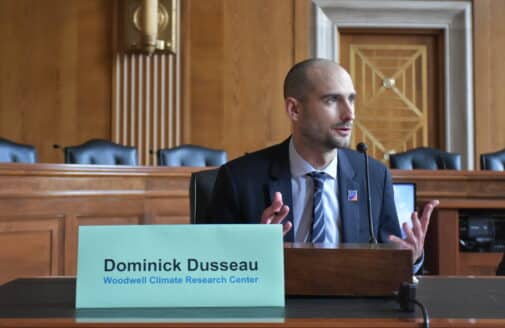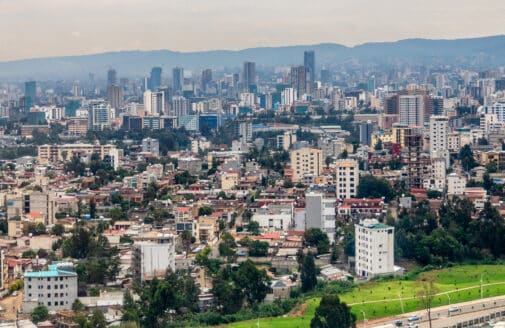Conclusion
Plymouth is currently at high risk from flooding, and this exposure will only increase under climate change. The results presented in this study were compared to FEMA’s flood maps, revealing significant discrepancies primarily due to the exclusion of pluvial flooding in FEMA’s analysis. The results of this research indicate an expected increase in the frequency and intensity of heavy rainfall with the probability of the present-day 100-year rainfall event likely to quadruple by the mid 21st century and be ten times more likely by the end of the century. Sea level rise is also an important contributor to changing flood risk for coastal areas of Plymouth. The projections from IPCC AR6 indicate significant sea level rise by 2050 (1.31 feet; 0.40 meters) and 2080 (2.66 feet; 0.81 meters) leading to larger flood extents. This report provides insight into the vulnerability of coastal and relatively inland areas, such as North Plymouth, Long Beach, and White Horse Beach where an increasing number of buildings and areas will be exposed to flood water by the end of the century. To alleviate some of the flooding, capacity limited conduits could be a good starting point for upgrades to the stormwater system for Plymouth.
Methodology
To simulate flood risk we use a coupled version of the LISFLOOD-FP v8.1 flood model (LISFLOOD-FP developers, 2022; Shaw et al., 2021) and the Environmental Protection Agency’s (EPA) Stormwater Management Model (SWMM). LISFLOOD-FP is a two-dimensional raster hydraulic model that solves an approximation of the shallow water equations. LISFLOOD-FP has been extensively used from the river reach scale to continental simulations and we refer the reader to Shaw et al. (2021) for a detailed explanation of LISFLOOD-FP. SWMM was introduced in 1971 by the USA Environmental Protection Agency and has been developed since then. SWMM is a one-dimensional stormwater system model solving the one-dimensional Saint-Venant equations.
LISFLOOD-FP and SWMM are coupled based on the methodology presented in Leandro and Martins (2016). SWMM and LISFLOOD-FP were coupled using SWMM’s dynamic link library (DDL). LISFLOOD-FP’s source code was modified to allow for bidirectional interaction between the two models at outfalls, catch basins, and manholes by calling SWMM functions during each LISFLOOD-FP time step. Time step synchronization between LISFLOOD-FP and SWMM is controlled by LISFLOOD-FP. The time step of LISFLOOD-FP is set as SWMM’s time step which keeps the two models aligned during the simulation. Flow from LISFLOOD-FP to SWMM through manholes and catch basins are governed by the orifice and weir equations. Flood volumes that occur at manholes and catch basins are transferred to LISFLOOD-FP. Further detail on flow interactions can be found in Chen et al. (2016).
All flood model results show flooding above 15 cm (~0.5 ft) as this is an average curb height and any flooding above this threshold would likely result in flood damages. All areas that are wetland and permanent water cover as determined by National Wetland Inventory (https://fwsprimary.wim.usgs.gov/wetlands/apps/wetlands-mapper/).
Three time periods were used for this study: 2000–2020 (also referred to as present-day), 2040–2060, and 2070–2090. These time periods can also be interpreted as warming levels in the context of climate policy. The 2000–2020, 2040–2060, and 2070–2090 periods correspond to 1, 2 and 3 degrees Celsius of warming respectively. For each time period, a pluvial/riverine flooding run and a coastal flooding run were performed. We combine the two runs by taking the maximum depth for each pixel across the two model runs unless otherwise noted.
Any analysis involving structures used the USA Structures dataset (https://gis-fema.hub.arcgis.com/pages/usa-structures). This dataset was created through a collaboration between DHS, FIMA, FEMA’s Response Geospatial Office, Oak Ridge National Laboratory, and the U.S. Geological Survey.
- Rainfall
- Historical Rainfall
The 24-hour 1-in-100 year rainfall event was used from NOAA Atlas 14 point precipitation frequency estimates for Plymouth, MA (Bonnin et al., 2006). The temporal distribution, also from NOAA Atlas 14, of the 24 hour rainfall is taken from the combined cases of the four quartiles and uses the 90% cumulative probability.
- Future Rainfall
CMIP6 climate model data were bilinearly interpolated to a 1-km grid and then bias-adjusted using phase 3 of the Inter-Sectoral Impact Model Intercomparison Project (ISIMIP) version 2.5 methodology (ISIMIP3BASD v2.5) (Lange, 2019; Lange, 2021). High-resolution, 1-km Daymet reanalysis data (Thornton et al., 2022) were selected as the observation dataset for bias adjustment. Precipitation annual maxima were then extracted for three time periods, 2000–2020, 2040–2060, and 2070–2090 using the SSP5-8.5 scenario from the downscaled data. The Akaike Information Criteria (AIC) was used to determine the best Generalized Extreme Value (GEV) distribution between the L-moments method (Hosking, 1990) and the Maximum Likelihood Estimation (MLE) (Prescott and Walden, 1980). The annual maxima data for each pixel across all models were fitted to a GEV distribution using the L-moments method as it was the best fit for Plymouth. The future return period of the historical (2000–2020) 1-in-100 year event is determined by finding the percentile in the future GEV distribution that corresponds with the historical rainfall amount. Rainfall amounts for the future 1-in-100 year events were estimated by determining what percentile in the historical period corresponds to the future 100-year amount, according to the future GEV. The percentile (analogous to a return period) was then converted to a rainfall amount using the rainfall distributions from the NOAA NA14 dataset.
- Digital Elevation Model
The USGS CoNED Topobathy DEM (Compiled 2016): New England was used to create the Plymouth, MA elevation domain. The resolution of the raw data was 1m. The final DEM resolution was set to 5m to sync better with the stormwater system.
- Friction Coefficients
Friction coefficients, or Manning N values, were determined based on the land cover type of the area. The 2019 land cover was used for this from the National Land Cover Database (NLCD). Based on each classification of land cover, an associated friction coefficient is provided. See table here:
https://rashms.com/wp-content/uploads/2021/01/Mannings-n-values-NLCD-NRCS.pdf
- Infiltration
To calculate soil infiltration rates, the USDA Soil Survey Geographic Database (SSURGO) for Massachuettes was used to obtain the soil hydrologic groups. These hydrologic groups have defined infiltration rates depending on the type of soil. Infiltration values per hydrologic group were used from Musgrave (1955). These rates in combination with the NLCD impervious surface percentages were used to compute more accurate infiltration rates. The impervious surfaces take into account built-up areas where rainfall will not be able to infiltrate. We do not incorporate the impact of stormwater systems to convey runoff from streetscapes.
- Tide
Tidal data was retrieved from the NOAA Tides and Currents. For Plymouth, the mean higher high water, 1.45m and the mean lower low water, -1.76m were used. These values are relative to the vertical datum NAVD88.
- Storm Surge
The FEMA flood insurance study reports were used to obtain 1-in-100 year storm surge values for points along the coast of Plymouth. We do not account for shifting tropical cyclone distributions as this is beyond the scope of this study.
Sea Level Rise
- Sea level rise data for Plymouth, MA was taken from the IPCC AR6 Sea Level Projection Tool. We use the SSP5-8.5 Low Confidence scenario in order to maintain consistency with the future rainfall analysis. We use the low confidence scenario (which refers to greater Antarctica and Greenland ice sheet melting) because global sea level rise projections continue to increase as new data comes to light (Garner et al., 2018). Moreover, the scientific community’s understanding of Antarctica’s contribution to sea level rise is not strong enough to meaningfully differentiate between SSP5-8.5 and other scenarios except for SSP1-2.6 (van de Wal et al., 2022). However, there is only a 0.1% chance that society will experience the SSP1-2.6 scenario (Zeppetello et al., 2022). Additionally, the SSP5-8.5 Low Confidence scenario is roughly equivalent to the NOAA Intermediate scenario presented in the Interagency Sea Level Rise Scenario Tool.

